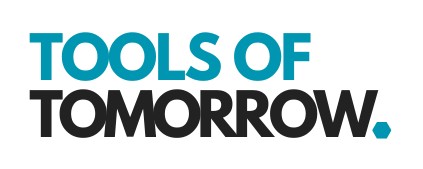How to Build AI-Powered Portfolio Optimization Systems That Adapt in Real-Time
Traditional portfolio optimization relies on static assumptions about risk, return, and correlation that become obsolete within hours of implementation.
Markets evolve. Relationships change. Static models fail.
But artificial intelligence can create dynamic portfolio optimization systems that adapt continuously to changing market conditions.
Machine learning algorithms can identify patterns invisible to traditional analysis.
Neural networks can model complex, non-linear relationships between assets.
Reinforcement learning can optimize portfolio decisions through continuous market interaction.
The convergence of AI and portfolio management has created unprecedented opportunities for adaptive optimization.
Professional asset managers are investing billions in AI-powered systems that outperform traditional approaches.
But the same technologies are now accessible to individual investors through open-source frameworks and cloud computing platforms.
Welcome to the age of intelligent portfolio management, where algorithms learn, adapt, and optimize continuously.
The AI Foundation: Understanding Intelligent Optimization Architecture
AI-powered portfolio optimization requires fundamentally different architecture than traditional mean-variance approaches.
Dynamic learning systems.
Traditional optimization uses historical data to estimate future parameters, assuming relationships remain constant.
AI systems continuously learn from new data, adapting their understanding of market relationships in real-time.
This adaptive capability enables portfolios to respond to regime changes, structural breaks, and evolving market dynamics.
The learning process never stops, ensuring that optimization remains current with market conditions.
Multi-objective optimization frameworks.
AI systems can simultaneously optimize multiple objectives that traditional methods struggle to balance.
Return maximization, risk minimization, drawdown control, and transaction cost reduction can be optimized simultaneously.
Machine learning algorithms can discover optimal trade-offs between competing objectives automatically.
This multi-dimensional optimization provides more robust and practical portfolio solutions.
Non-linear relationship modeling.
Traditional portfolio theory assumes linear relationships between risk factors and returns.
AI systems can model complex, non-linear relationships that better reflect actual market behavior.
Neural networks excel at capturing these complex interactions between multiple variables.
This enhanced modeling capability can identify opportunities invisible to linear optimization methods.
Regime-aware adaptation mechanisms.
Markets operate in different regimes with distinct risk-return characteristics.
AI systems can automatically detect regime changes and adapt optimization parameters accordingly.
This regime awareness prevents optimization based on outdated assumptions about market behavior.
Adaptive systems maintain performance across different market environments.
Machine Learning Feature Engineering: Extracting Predictive Signals
Effective AI portfolio optimization depends on sophisticated feature engineering that extracts meaningful signals from market data.
Alternative data integration.
AI systems can incorporate vast amounts of alternative data beyond traditional price and volume information.
Sentiment analysis, economic indicators, corporate earnings, and macroeconomic data can enhance optimization.
Natural language processing can extract signals from news, social media, and analyst reports.
This expanded data universe provides richer information for optimization decisions.
Technical indicator evolution.
Traditional technical indicators can be enhanced through machine learning techniques.
AI systems can discover optimal parameter combinations and create adaptive indicators.
Ensemble methods can combine multiple indicators to create more robust signals.
These enhanced indicators provide better inputs for portfolio optimization algorithms.
Cross-asset signal extraction.
AI systems can identify predictive relationships across different asset classes and markets.
Currency movements, commodity prices, and bond yields can provide signals for equity portfolio optimization.
These cross-asset relationships can enhance diversification and risk management.
Global signal extraction provides more comprehensive optimization inputs.
Time-series feature creation.
Sophisticated time-series analysis can extract predictive features from price and volume data.
Wavelet transforms, spectral analysis, and recurrent patterns can provide optimization signals.
These advanced techniques can identify cyclical patterns and momentum characteristics.
Time-series features enhance the temporal understanding of market dynamics.
Deep Learning Portfolio Models: Neural Network Optimization
Deep learning techniques can create sophisticated portfolio optimization models that surpass traditional approaches.
Autoencoder risk modeling.
Autoencoders can identify latent risk factors that traditional factor models miss.
These neural networks can compress high-dimensional asset data into meaningful risk representations.
Autoencoder-based risk models can adapt to changing factor structures automatically.
This approach provides more accurate and current risk assessment for optimization.
Recurrent neural network forecasting.
LSTM and GRU networks can model complex temporal dependencies in asset returns.
These networks can capture long-term memory effects that traditional models ignore.
Recurrent networks can provide more accurate return forecasts for optimization inputs.
The temporal modeling capability enhances optimization accuracy and robustness.
Attention mechanism integration.
Attention mechanisms can help neural networks focus on the most relevant information for optimization.
These techniques can identify which assets, time periods, or factors are most important for current decisions.
Attention-based models can provide interpretable insights into optimization reasoning.
This interpretability helps validate and refine AI optimization systems.
Generative adversarial networks.
GANs can generate synthetic market scenarios for robust portfolio optimization.
These networks can create realistic but diverse market conditions for stress testing.
GAN-generated scenarios can enhance optimization robustness and risk management.
This synthetic data generation provides more comprehensive optimization validation.
Reinforcement Learning: Adaptive Decision Making
Reinforcement learning enables portfolio optimization systems to learn optimal strategies through direct market interaction.
Markov decision process formulation.
Portfolio optimization can be formulated as a Markov decision process with states, actions, and rewards.
States represent market conditions and current portfolio positions.
Actions represent portfolio allocation decisions and rebalancing choices.
Rewards reflect portfolio performance, risk metrics, and transaction costs.
Deep Q-learning implementation.
Deep Q-networks can learn optimal portfolio allocation policies through trial and error.
These systems can discover strategies that traditional optimization methods cannot find.
Q-learning can handle complex, non-linear reward functions and constraints.
The learning process can adapt to changing market conditions automatically.
Policy gradient methods.
Actor-critic algorithms can learn continuous portfolio allocation policies.
These methods can handle the continuous action spaces inherent in portfolio optimization.
Policy gradients can optimize complex objective functions that include multiple performance metrics.
The continuous optimization capability provides more flexible portfolio management.
Multi-agent reinforcement learning.
Multiple AI agents can collaborate or compete to enhance portfolio optimization.
Different agents can specialize in different market conditions or asset classes.
Multi-agent systems can provide more robust and diverse optimization strategies.
This collaborative approach can enhance overall portfolio performance.
Real-Time Adaptation: Dynamic Optimization Systems
AI portfolio optimization systems must adapt continuously to changing market conditions and new information.
Online learning algorithms.
Online learning enables portfolio systems to update their models with each new data point.
These algorithms can adapt to changing market conditions without retraining entire models.
Online learning provides real-time adaptation to evolving market dynamics.
This continuous learning capability maintains optimization relevance and accuracy.
Concept drift detection.
AI systems must detect when market relationships change significantly.
Concept drift detection algorithms can identify when models need updating or replacement.
These techniques prevent optimization based on obsolete market relationships.
Drift detection ensures that AI systems remain current with market evolution.
Adaptive hyperparameter tuning.
Model hyperparameters must adapt to changing market conditions for optimal performance.
Automated hyperparameter optimization can adjust model parameters continuously.
This adaptation ensures that AI models remain optimally configured for current conditions.
Adaptive tuning maintains model performance across different market regimes.
Ensemble model management.
Multiple AI models can be combined to provide more robust optimization decisions.
Ensemble weights can adapt based on individual model performance and market conditions.
This approach provides more stable and reliable optimization results.
Dynamic ensemble management enhances overall system robustness.
Risk Management Integration: AI-Enhanced Risk Control
AI portfolio optimization must incorporate sophisticated risk management that adapts to changing market conditions.
Dynamic risk modeling.
AI systems can create risk models that adapt to changing volatility and correlation patterns.
These models can identify emerging risks before they impact portfolio performance.
Dynamic risk modeling provides more accurate and timely risk assessment.
This enhanced risk understanding improves optimization decisions and portfolio protection.
Stress testing automation.
AI systems can automatically generate and evaluate stress test scenarios.
Machine learning can identify the most relevant stress scenarios for current market conditions.
Automated stress testing provides continuous risk assessment and portfolio validation.
This ongoing evaluation ensures that portfolios remain robust under adverse conditions.
Tail risk optimization.
AI systems can optimize portfolios specifically for tail risk management.
These systems can identify and hedge against low-probability, high-impact events.
Tail risk optimization provides better protection during market crises.
This enhanced protection can preserve capital during adverse market conditions.
Liquidity risk assessment.
AI systems can assess and optimize for liquidity risk across different market conditions.
These systems can predict liquidity changes and adjust portfolios accordingly.
Liquidity optimization ensures that portfolios can be adjusted when necessary.
This capability is crucial for maintaining portfolio flexibility and risk management.
Transaction Cost Optimization: AI-Enhanced Execution
AI portfolio optimization must consider transaction costs and market impact to ensure that theoretical gains translate into actual returns.
Market impact modeling.
AI systems can model the market impact of portfolio trades more accurately than traditional approaches.
These models can consider order size, market conditions, and timing effects.
Enhanced market impact modeling improves execution quality and reduces costs.
This optimization ensures that portfolio changes are implemented efficiently.
Optimal execution algorithms.
AI can create execution algorithms that minimize transaction costs and market impact.
These algorithms can adapt to changing market conditions and liquidity patterns.
Optimal execution ensures that portfolio optimization benefits are realized in practice.
This capability is crucial for maintaining net portfolio performance.
Trade timing optimization.
AI systems can optimize the timing of portfolio trades to minimize costs and impact.
These systems can identify optimal execution windows based on market conditions.
Timing optimization can significantly improve portfolio implementation efficiency.
This enhancement ensures that optimization benefits translate into actual returns.
Cross-asset execution coordination.
AI systems can coordinate trades across multiple assets to minimize overall impact.
This coordination can reduce transaction costs and improve execution quality.
Cross-asset optimization provides more efficient portfolio implementation.
This capability enhances the practical benefits of AI portfolio optimization.
Performance Attribution: Understanding AI Optimization Sources
AI portfolio optimization requires sophisticated performance attribution to understand and improve system effectiveness.
Factor attribution analysis.
AI systems can provide detailed attribution of portfolio performance to different factors.
This analysis helps understand which AI components contribute most to performance.
Factor attribution guides system refinement and optimization priorities.
Understanding performance sources enables continuous system improvement.
Model contribution assessment.
Different AI models within the optimization system may contribute differently to performance.
Understanding these contributions helps optimize model selection and weighting.
Model attribution guides resource allocation and development priorities.
This analysis ensures that AI resources are used most effectively.
Regime-specific performance analysis.
AI optimization performance may vary across different market regimes.
Understanding regime-specific performance helps improve system robustness.
This analysis guides adaptive mechanisms and regime detection algorithms.
Regime analysis ensures consistent performance across different market conditions.
Risk-adjusted return decomposition.
AI systems must provide risk-adjusted performance attribution for proper evaluation.
This decomposition helps understand whether performance comes from skill or risk-taking.
Risk-adjusted attribution guides optimization objectives and constraints.
This analysis ensures that AI systems provide genuine value-added performance.
Scalability and Infrastructure: Building Production-Ready Systems
AI portfolio optimization systems must be designed for scalability and production deployment.
Distributed computing architecture.
Large-scale AI optimization requires distributed computing capabilities.
Cloud platforms provide scalable infrastructure for complex optimization problems.
Distributed systems can handle large portfolios and complex models efficiently.
This scalability enables AI optimization for institutional-scale portfolios.
Real-time data processing.
AI optimization requires real-time processing of market data and news feeds.
Stream processing systems can handle high-volume, low-latency data requirements.
Real-time processing ensures that AI systems can respond quickly to market changes.
This capability is crucial for maintaining optimization relevance and effectiveness.
Model deployment and monitoring.
Production AI systems require sophisticated deployment and monitoring capabilities.
These systems must ensure model reliability, performance, and compliance.
Continuous monitoring helps identify and resolve system issues quickly.
Proper deployment practices ensure that AI optimization systems operate reliably.
Backup and disaster recovery.
AI optimization systems require robust backup and disaster recovery procedures.
These procedures ensure business continuity during system failures or outages.
Disaster recovery planning protects against data loss and system downtime.
This protection is crucial for maintaining portfolio management capabilities.
Regulatory Compliance: AI in Regulated Environments
AI portfolio optimization must comply with various regulatory requirements that affect system design and operation.
Model explainability requirements.
Regulators may require explanations of AI optimization decisions and processes.
Explainable AI techniques can provide interpretable insights into optimization reasoning.
These explanations help ensure regulatory compliance and stakeholder understanding.
Explainability requirements may constrain AI model selection and design.
Audit trail maintenance.
AI systems must maintain comprehensive audit trails of decisions and processes.
These trails must document model inputs, processing, and outputs for regulatory review.
Proper documentation ensures compliance with regulatory requirements.
Audit trails help validate AI system operation and decision-making processes.
Risk management compliance.
AI optimization must comply with risk management regulations and guidelines.
These requirements may constrain optimization objectives and methods.
Compliance ensures that AI systems operate within regulatory frameworks.
Understanding regulatory requirements guides AI system design and implementation.
Data privacy and security.
AI systems must protect sensitive financial data and comply with privacy regulations.
These requirements affect data collection, processing, and storage practices.
Privacy compliance ensures that AI systems operate legally and ethically.
Security measures protect against data breaches and unauthorized access.
Future Evolution: Preparing for AI Advancement
AI portfolio optimization technology continues evolving rapidly, creating new opportunities and challenges.
Quantum machine learning.
Quantum computing may eventually enhance AI portfolio optimization capabilities.
Quantum algorithms could provide exponential speedups for certain optimization problems.
Understanding quantum AI developments helps prepare for future advantages.
Early experimentation with quantum techniques may provide competitive benefits.
Federated learning applications.
Federated learning could enable collaborative AI optimization without sharing sensitive data.
This approach could provide access to larger datasets while maintaining privacy.
Federated learning may enable new forms of collaborative portfolio optimization.
Understanding federated approaches helps prepare for future opportunities.
Neuromorphic computing integration.
Neuromorphic chips could provide more efficient AI processing for portfolio optimization.
These specialized processors could reduce power consumption and improve performance.
Neuromorphic computing may enable more sophisticated AI optimization systems.
Understanding neuromorphic developments helps prepare for future technological shifts.
Artificial general intelligence implications.
AGI development could revolutionize portfolio optimization and financial markets.
Understanding AGI implications helps prepare for potential paradigm shifts.
Early preparation for AGI developments may provide significant advantages.
These considerations help guide long-term AI optimization strategy.
Mastering the Intelligent Advantage
AI-powered portfolio optimization represents the future of systematic investment management.
The convergence of machine learning, big data, and computational power has created unprecedented opportunities for adaptive optimization.
Success requires understanding AI techniques, their applications, and their limitations in financial contexts.
The most effective AI optimization systems combine multiple techniques in coordinated frameworks that adapt continuously to changing conditions.
Understanding that AI is a tool that enhances rather than replaces human judgment helps ensure successful implementation.
The future belongs to those who can harness artificial intelligence to create portfolios that adapt, learn, and optimize continuously.
Your AI optimization journey begins with recognizing that static models are obsolete in dynamic markets.
Every algorithm that learns from new data represents potential advantage for those sophisticated enough to implement adaptive systems.
The question isn’t whether AI will transform portfolio optimization. The question is whether you’re ready to build the intelligent systems that will define the future of investment management.
The algorithms are learning. The systems are adapting. The optimization is continuous.
The only question is whether you’re ready to embrace the intelligent future of portfolio management.
AI portfolio optimization involves substantial risks including model uncertainty, overfitting, and potential system failures. Machine learning models may not perform as expected in live markets and can produce unexpected results. AI systems require significant technical expertise and ongoing maintenance. Past performance of AI models does not guarantee future results. Consider your technical capabilities, risk tolerance, and regulatory requirements before implementing AI optimization systems. Consult with qualified AI, financial, and regulatory professionals regarding system suitability and implementation approaches.






